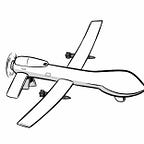Everybody Loved Their Browning Hi-Powers Back in the Day
Opposing armies with the same gun
From the 1940s until recent times, if a soldier carried a nine-millimeter pistol into battle as part of his weaponry there was a good chance it was a Browning Hi-Power.
The Hi-Power was a part of nearly every world conflict of the 20th century. On both sides.
Saddam Hussein carried one—and liked to fire it into the air to rile up his supporters. Libyan strongman Muammar Gaddafi owned a customized, gold-plated Hi-Power with an image of his face etched in the grips.
During World War II, both the Waffen-SS and the Allied special operators who opposed them—such as agents of the Office of Strategic Services or the Special Operations Executive—often carried the pistol.
When the British and the Argentinians faced off during the 1982 Falklands War, both sides carried the Hi-Power—and frequently captured the pistols and its ammunition from each other.
And for decades it was the standard NATO sidearm. In fact, more than 90 countries used John Browning’s last pistol design. At least 50 still have it in their arsenals.
“Soldiers will continue to face one another with a Hi-Power in their hands,” Doug Wicklund, senior curator at the NRA National Firearms Museum in Virginia, told War is Boring. “It happened during World War II, it happened during the Falklands and it will happen again.”
During the early 1920s, the French army sought a new pistol that would have a high-capacity magazine of least 10 rounds and chamber nine-millimeter Parabellum ammunition.
Impressed with the power and reliability of the M1911 .45-caliber pistol designed by Browning, the French generals in charge of new ordnance established a standard they called grande puissance—literally “high power”—that the new pistol would have to meet.
In 1923, Browning filed a patent for a prototype pistol that was the forerunner of the Hi-Power. However, he died in 1926 before he could refine the design.
Dieudonné Saive of the Belgian weapons company Fabrique Nationale Herstal took up the project and completed the pistol’s design. By 1934, FN began production of the Hi-Power in earnest—too late, though, for the fickle French, who decided to adopt another pistol.
But the Belgian army seized the opportunity and adopted the gun. The pistol’s magazine capacity set it apart. A Hi-Power magazine holds 13 rounds of nine-millimeter Parabellum ammunition—14 rounds if it’s a Canadian-made Inglis magazine.
“That’s quite a bit more than a Luger,” Wicklund said, noting that no other combat handgun in the world at the time could compare.
After occupying Belgium in 1940, German forces took over the FN plant. German airborne and SS troops often used the Hi-Power pistols manufactured under German control. Those weapons have the designation Pistole 640(b)—the “b” for belgisch or “Belgian”—and are highly-desired collector’s items today.
A number of FN designers and engineers escaped Belgium ahead of the Nazi invasion with the plans for the Hi-Power. Canadian manufacturer John Inglis and Co. in Toronto re-tooled their factory and began production of the pistol, which were issued to a variety of British Empire forces.
But there were also large batches of Inglis-produced Hi-Powers made for a special purpose—as so-called “sterile weapons.” Lacking serial numbers or other markings, they were favorites of covert operators.
In fact, many of those sterile pistols remained in the inventory of the British SAS well into the 1980s.
There is even a version of the Hi-Power with an adjustable tangent sight and detachable shoulder stock that transforms the pistol into a pint-sized carbine. The combination has its flaws—the pistol’s attachment to the stock is wobbly at best—but in the hands of a skilled marksman, the Hi-Power can hit even distant targets.
By the 1990s, though, the Hi-Power was beginning to show its age. One name began to make world militaries think twice about maintaining the venerable weapon as their main battle pistol. Glock.
“The polymer-framed pistol captured imaginations around the world,” Wicklund said. “The Hi-Power really had its heyday during the period of steel-framed pistols from the 1940s to the 1980s. It is still sought after, but it is just not in the same demand.”
There are good reasons why the Hi-Power is still in use. It’s robust and reliable, capable of withstanding battlefield abuse and its ammo is widely used around the world. What’s more, it’s easy to field strip and clean, a feature always beloved by the common soldier who sometimes must put hours into cleaning his weapons.
The Hi-Power’s magazine capacity, ergonomics, ease of maintenance, reliance on a commonly produced ammunition and solid construction virtually guarantee it will stay in use throughout the 21st century.
